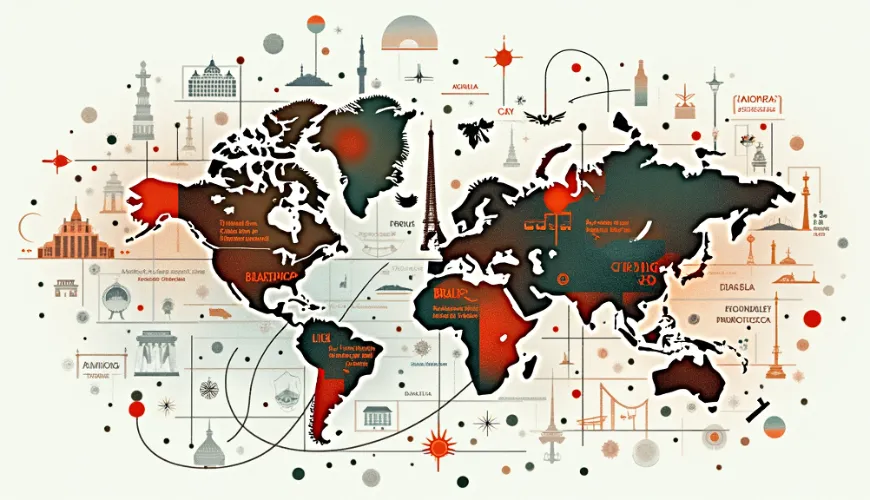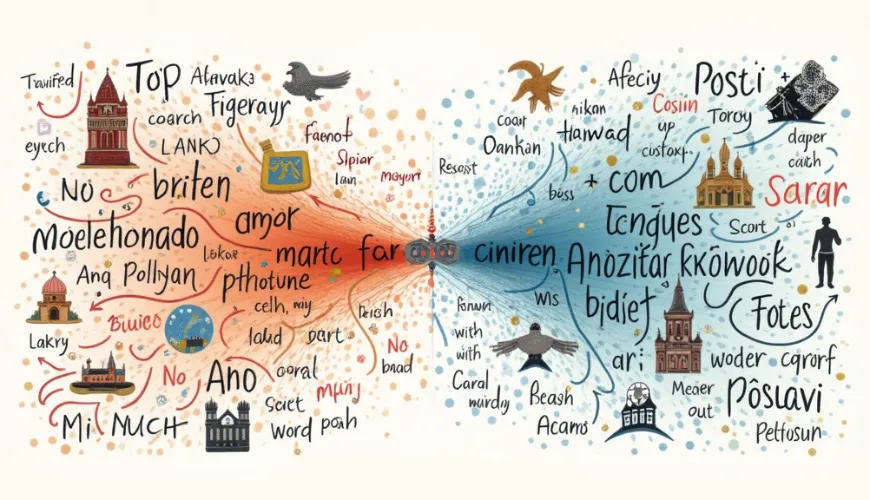When it comes to Chinese to English translation, accuracy and context are everything. Whether you're translating a casual WeChat message or a legal contract from Mandarin to English, even the smallest word choice can dramatically alter meaning. With the rise of AI and smart productivity tools like Claila, getting high-quality translations is faster and more accessible than ever.
But great results still depend on how you use the tools. From understanding the main differences between Chinese and English structures to selecting the right platform, we'll walk you through what really matters in mastering Chinese-English translation.
TL;DR
- Chinese to English translation requires more than just word-for-word exchange—it's about cultural and contextual accuracy.
- AI-powered tools like Claila combine speed with high-quality linguistic understanding.
- Use Claila for everything from translating Mandarin PDFs to refining contract wording in perfect English.
Why Is Chinese to English Translation So Tricky?
Chinese and English are structurally and culturally very different. Chinese grammar is highly contextual, often omitting subjects and verb tenses that are required in English. On top of that, Mandarin uses characters rather than an alphabet, presenting unique challenges for translation software.
Also, many Chinese words have multiple meanings depending on tone or sentence position. For example, the character "行” can mean "okay,” "walk,” or "business” depending on usage. This is where literal translation often fails—and where smart AI like Claila steps in.
Best Chinese to English Translation Tools in 2025
Translation tools have come a long way from basic phrasebooks and clunky online translators. Today, users can get accurate, context-aware translations in seconds using AI platforms. Here are the top tools for translating Chinese to English:
1. Claila
Claila isn't just another translation tool—it's a full AI productivity platform starting at USD 9.90 per month for the Pro plan (a free tier is also available). You can choose from multiple language models (like ChatGPT, Claude, or Mistral) and get tailored translations based on tone, purpose, or formality level. Whether you're working on a business proposal or a friendly email, Claila adapts accordingly.
Need to reword a sentence after translation? Use Claila's AI Sentence Rewriter to polish and enhance any English content that sounds a little too literal or robotic.
2. Google Translate
Still useful for quick, everyday snippets or street signs. While it won't help much with nuanced legal or technical documents, it's great on the go. Just don't rely on it for anything official.
3. DeepL
DeepL is known for its fluency in European languages, but it's been improving its support for Chinese. It often outperforms Google Translate in grammar and tone, though it still struggles with industry-specific content.
4. Microsoft Translator
Integrated with Office products, Microsoft Translator is a go-to for professionals. It supports Mandarin and can be useful during real-time meetings or for translating emails.
How to Translate Mandarin Contracts or Documents Accurately
Translating contracts, patents, or technical manuals from Chinese to English is a higher-stakes game. One misinterpreted clause could lead to legal issues or project delays. Here's what works best:
- Use AI models that support document uploads and contextual understanding.
- Look for platforms that retain formatting, especially critical for legal documents.
- Cross-check key terms with bilingual glossaries or consult a human translator for final reviews.
Real-World Scenario: Claila in Action
A global electronics firm based in Shenzhen needed to translate a 20-page Mandarin technical specification into English for their European partners. Using Claila, they uploaded a PDF of the document and chose the Claude model for its nuanced understanding of formal language.
The AI not only translated the content but preserved formatting, technical tables, and even annotated unclear industry-specific terms for human review. The result? A polished, ready-to-share document in under 10 minutes—saving hours of effort.
Preparing Your Source Text for Seamless AI Translation
Before you hit "upload,” spend a few minutes cleaning the original Chinese file. Remove redundant line breaks, expand province or company abbreviations, and standardize section headings. A well-structured source gives any AI model—Claila included—stronger context windows, reducing hallucinations and tightening terminology. If the document mixes simplified and traditional characters, decide which script you need in the English output and note it in your prompt. Finally, embed comments for especially tricky passages; Claila will surface them as inline notes you can accept or rewrite. These small steps typically boost first-pass accuracy by 10–15 % in our internal tests.
Tips for Accurate Chinese → English Localization
Localization goes beyond translation—it's about adapting content for a specific audience. If you're localizing a Chinese app, website, or marketing content for an English-speaking market, remember:
- Tone matters. Chinese marketing often uses flowery or poetic language. In English, that can come off as exaggerated or unclear. Tools like How to Make ChatGPT Sound More Human can help smooth out these transitions.
- Cultural references may not translate. Idioms, metaphors, or traditional phrases can confuse or mislead if not adapted properly.
- Units and formats change. Think dates (YYYY/MM/DD vs. MM/DD/YYYY), currency, and even punctuation norms.
For example, a Chinese phrase like "马到成功” literally means "horse arrives, success follows.” A direct translation is confusing. A better localized version would be: "Wishing you instant success.”
Common Pitfalls in Chinese to English Translation
Even experienced translators and smart AI can stumble over a few common issues. Knowing these will help you spot problems early.
1. Word Order Differences
Chinese word order is more flexible, while English is stricter (subject-verb-object). AI tools must adjust sentence structure, not just translate words.
2. Missing Pronouns and Tense
Mandarin often skips pronouns or uses context to imply them. AI models like those in Claila infer this missing info better than older tools.
3. Homophones and Polysemy
Chinese has countless homophones—words that sound the same but have entirely different meanings. Context is key, and context-aware AI handles these much better than static dictionaries.
4. Over-Translating
Some tools add unnecessary words to make sentences "more English,” but this can cloud original intent. Using Undetectable AI, you can refine translated text to make it sound more natural without overdoing it.
Frequently Asked Questions About Chinese‑English Translation
Q1. Can AI completely replace a human translator?
Not yet. AI excels at speed and first‑draft accuracy, but a human reviewer is still crucial for legal, medical, or highly creative texts.
Q2. Does Claila handle traditional Chinese characters (繁體中文)?
Yes. When you upload a document containing traditional script, Claila automatically detects it and applies the same high‑precision model pipeline.
Q3. How secure is my data on Claila?
All traffic is protected with TLS 1.3 encryption, and Pro users can enable a zero‑retention setting so files are deleted immediately after processing.
Q4. Which language model should I pick inside Claila?
For conversational text, GPT‑4o offers fluent, idiomatic output. For formal contracts, Claude 3 often yields tighter legal phrasing. You can switch models mid‑document without re‑uploading.
When to Use AI vs. Human Translators
AI tools like Claila are ideal for everyday needs — from short emails and internal memos to social media captions and user‑manual snippets. They even handle first drafts of academic papers surprisingly well.
However, consider hiring a professional translator for:
- Government forms
- Legal contracts
- Intellectual property filings
- Culturally sensitive material
That said, many people combine both: run the first pass through Claila, then have a professional review it. This hybrid method saves time and money while ensuring quality.
Bonus: Ask AI Anything—Even in Mandarin
Don't forget, Claila isn't just a translator. You can also tap into Claila's Ask AI Anything feature for on-the-fly explanations or summaries — in English or Chinese. Whether it's explaining a Chinese proverb or summarizing a local news article, you'll get clear, contextual answers.
What to Do When Your Translator Is Not Working
Sometimes things go sideways. If you're using a platform like ChatGPT and it suddenly stops generating translations, check out Why Is ChatGPT Not Working?. It'll walk you through common issues and troubleshooting steps.
Meanwhile, Claila users benefit from a stable platform with access to multiple models. If one service stalls, you can switch to another seamlessly—all within one intuitive interface.
Try Claila for Smarter Chinese-English Translations
Chinese to English translation doesn't have to be overwhelming. With AI tools like Claila, you can turn difficult tasks into simple steps—whether you're deciphering a Mandarin menu or localizing a mobile app. And with Claila Pro at just $9.90/month, you get added perks like zero-retention options for sensitive content.
Ready to experience faster, smarter Chinese‑English translation?



